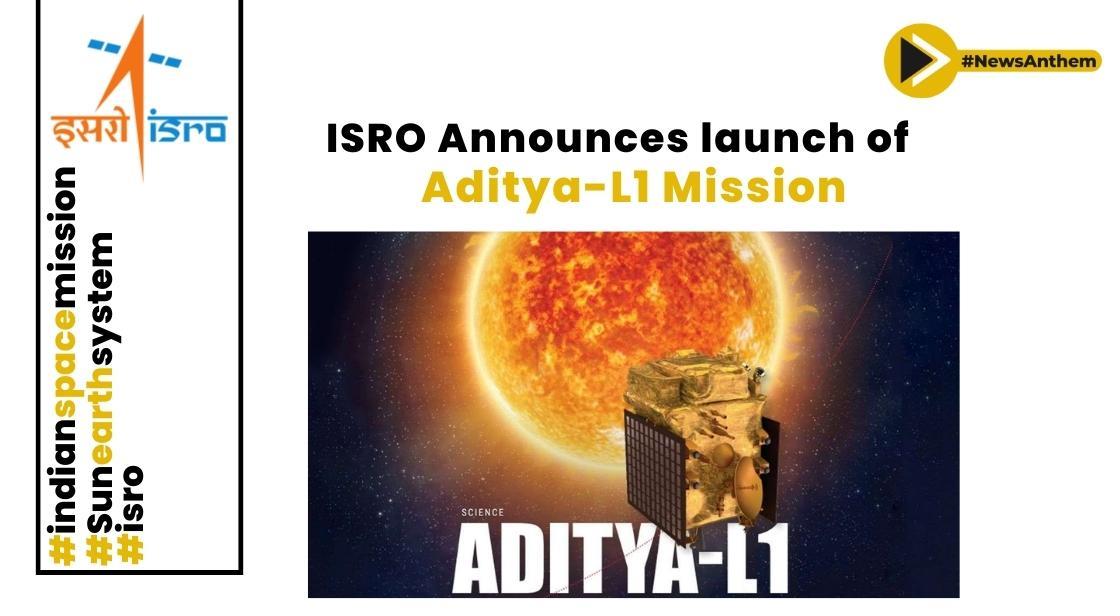ISRO Unveils Launch Schedule for Aditya L1: India's Pioneering Sun Study Mission

News Synopsis
India's space agency, ISRO, is poised to launch its groundbreaking Aditya L1 mission, an unparalleled space-based observatory focused on studying the Sun. The mission's launch, scheduled for September 2, 2023, from Sriharikota, represents a monumental step in unraveling the mysteries of the Sun and its influence on space weather.
Pioneering Sun Study from the Halo Orbit
Aditya L1 holds the distinction of being India's maiden space-based mission exclusively designed to study the Sun. The spacecraft is destined for a halo orbit around the Lagrange point 1 (L1) of the Sun-Earth system, positioned approximately 1.5 million km from Earth.
This strategic location provides an uninterrupted view of the Sun, unhampered by eclipses or occultations.
Advantages of Lagrange Point L1
By selecting the Lagrange point L1, Aditya L1 gains an unprecedented advantage - continuous and real-time observation of solar activities. This unobstructed view facilitates the study of solar phenomena and their effects on space weather with remarkable accuracy.
The spacecraft is equipped with seven cutting-edge payloads designed to capture data on the photosphere, chromosphere, and the corona of the Sun.
Payloads and Solar Insights
The seven payloads aboard Aditya L1 comprise electromagnetic, particle, and magnetic field detectors. This sophisticated suite of instruments allows the spacecraft to directly observe the Sun, monitor particle dynamics, and map magnetic fields.
The unique vantage point at L1 enables four payloads to observe the Sun directly, while the remaining three payloads undertake in-situ studies of particles and fields, contributing valuable insights into solar dynamics within the interplanetary medium.
Scientific Objectives and Exploration
Aditya L1 embarks on a journey to address several significant scientific objectives:
-
Study the dynamics of the solar upper atmosphere, including the chromosphere and corona.
-
Investigate coronal heating, the initiation of coronal mass ejections, and flare activities.
-
Analyze the partially ionized plasma and the physics of solar corona.
-
Probe the in-situ particle and plasma environment, contributing to the understanding of particle dynamics from the Sun.
Toward a Deeper Understanding
The mission's comprehensive payloads are poised to provide critical data to decode complex solar phenomena such as coronal mass ejections, flares, coronal heating, and magnetic field behavior.
Aditya L1's strategic orbit and sophisticated instruments will facilitate vital insights into solar dynamics, enhancing humanity's understanding of the Sun's influence on Earth and space.
Relevant and Latest Facts about Aditya-L1
-
Aditya-L1 is the first space-based observatory in India dedicated to studying the Sun.
-
The mission is scheduled to be launched on September 2, 2023, at 11:50 Hrs. IST from Sriharikota.
-
The spacecraft will be placed in a halo orbit around the Lagrange point 1 (L1) of the Sun-Earth system.
-
The mission will carry seven payloads to study the Sun's upper atmospheric (chromosphere and corona) dynamics, chromospheric and coronal heating, and the physics of the partially ionized plasma.
-
The mission is expected to provide important scientific insights into the Sun's dynamics and its impact on space weather
Conclusion
ISRO's Aditya L1 mission signifies India's prowess in space research and technology. With its pioneering design, strategic orbit, and state-of-the-art payloads, Aditya L1 is poised to revolutionize our comprehension of the Sun's behavior and its far-reaching impacts on space weather and Earth.
You May Like









